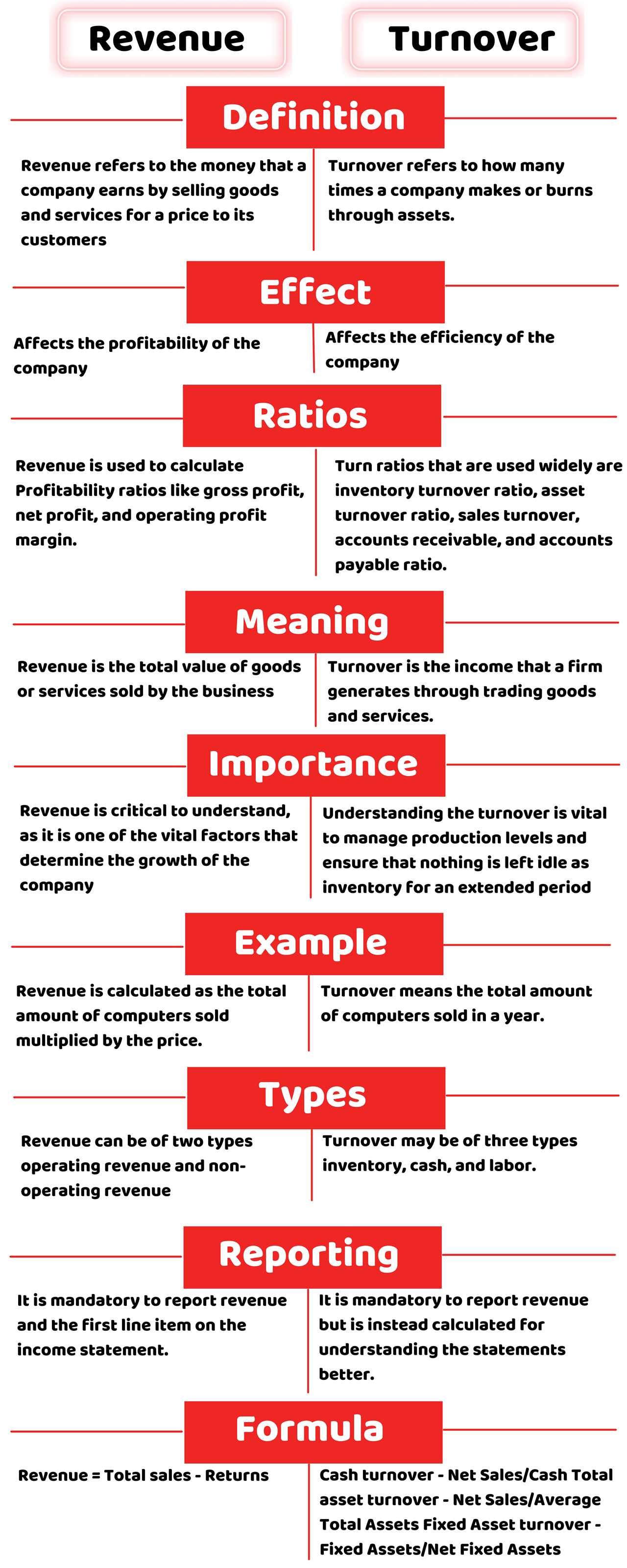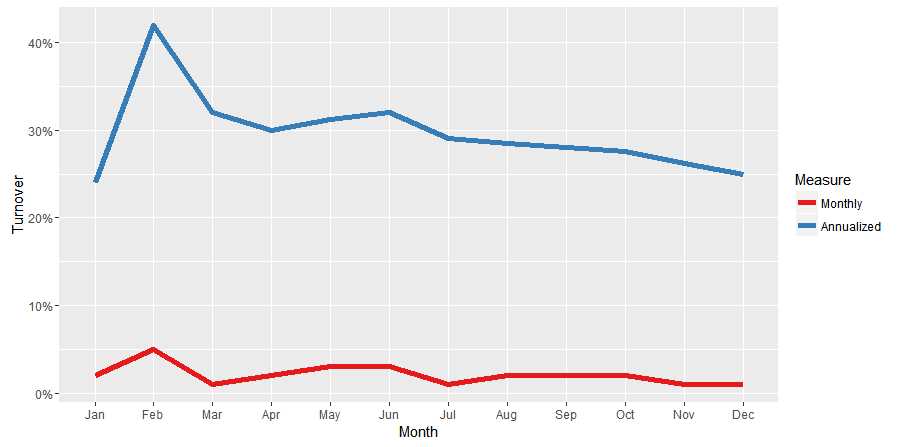What is Overall Turnover?
Types of Turnover
There are two main types of turnover: voluntary and involuntary. Voluntary turnover occurs when employees choose to leave the company, either to pursue other opportunities or due to dissatisfaction with their current role. Involuntary turnover, on the other hand, happens when employees are terminated or laid off by the company.
Voluntary turnover can be further categorized into two subtypes: functional and dysfunctional. Functional turnover refers to the departure of low-performing or disengaged employees, which can actually benefit the organization by creating opportunities for new talent. Dysfunctional turnover, on the other hand, involves the loss of high-performing employees who are valuable to the company.
The Impact of Overall Turnover
High turnover rates can have a significant impact on a company’s bottom line. The costs associated with recruiting, hiring, and training new employees can be substantial. Additionally, turnover can disrupt workflow and decrease productivity, as new hires may take time to get up to speed and become fully productive. It can also have a negative effect on employee morale and engagement, as remaining employees may feel overworked or undervalued.
Reducing overall turnover is crucial for organizations looking to maintain a stable and productive workforce. By implementing strategies to improve employee satisfaction, engagement, and retention, companies can minimize turnover and create a positive work environment.
Factors Affecting Overall Turnover
1. Job Satisfaction
Job satisfaction plays a significant role in employee turnover. When employees are satisfied with their job, they are more likely to stay with the organization. Factors that contribute to job satisfaction include a positive work environment, fair compensation, opportunities for growth and development, and recognition for their work.
2. Leadership and Management

The quality of leadership and management within an organization can greatly impact turnover rates. Effective leaders and managers can create a supportive and motivating work environment, provide clear expectations and guidance, and foster open communication. On the other hand, poor leadership and management practices can lead to dissatisfaction and turnover.
3. Work-Life Balance
An imbalance between work and personal life can contribute to higher turnover rates. Employees who feel overwhelmed with work demands and have little time for personal activities and relationships may seek employment elsewhere. Organizations that prioritize work-life balance and offer flexible work arrangements can help reduce turnover.
4. Compensation and Benefits
Competitive compensation and benefits packages are essential for attracting and retaining top talent. If employees feel that their compensation is not aligned with their skills, experience, and market standards, they may be more inclined to seek better opportunities elsewhere. Regular salary reviews, performance-based bonuses, and comprehensive benefits can help mitigate turnover.
5. Career Development Opportunities
Employees value organizations that offer opportunities for career growth and advancement. Lack of career development prospects can lead to stagnation and dissatisfaction, prompting employees to look for new challenges elsewhere. Organizations should invest in training and development programs, provide clear career paths, and offer opportunities for employees to learn and acquire new skills.
6. Workload and Stress
An excessive workload and high levels of stress can contribute to turnover. When employees feel overwhelmed and unable to cope with their workload, they may experience burnout and seek less demanding positions. Organizations should ensure that workloads are manageable, provide resources and support to help employees deal with stress, and promote a healthy work-life balance.
The Mechanics of Overall Turnover
1. Tracking and Analyzing Turnover Data

To understand the mechanics of overall turnover, businesses need to track and analyze relevant data. This includes collecting information on the number of employees who leave the company, the reasons for their departure, and the time it takes to replace them. By analyzing this data, businesses can identify patterns and trends, such as high turnover in certain departments or during specific periods.
2. Identifying Root Causes
3. Developing Retention Strategies
One of the key aspects of managing overall turnover is developing effective retention strategies. This involves creating a positive work environment, providing opportunities for career development, offering competitive compensation and benefits packages, and implementing employee recognition programs. By focusing on employee satisfaction and engagement, businesses can increase retention rates and reduce overall turnover.
4. Improving Recruitment and Onboarding Processes
In addition to retention strategies, businesses should also focus on improving their recruitment and onboarding processes. This includes attracting and selecting the right candidates for the job, conducting thorough interviews and assessments, and providing comprehensive onboarding and training programs. By ensuring that new hires are a good fit for the organization and have the necessary skills and knowledge, businesses can reduce turnover rates and improve overall employee satisfaction.
5. Monitoring and Adjusting Strategies
Finally, it is important for businesses to continuously monitor and adjust their strategies to manage overall turnover. This involves regularly reviewing turnover data, soliciting feedback from employees, and making necessary changes to retention and recruitment practices. By staying proactive and responsive to the needs of employees, businesses can effectively manage turnover and create a more stable and productive work environment.
Strategies to Manage Overall Turnover
Managing overall turnover is crucial for businesses to maintain stability and productivity. High turnover rates can lead to increased costs, decreased morale, and a loss of valuable talent. Therefore, implementing effective strategies to manage overall turnover is essential for long-term success.
1. Improve Recruitment and Selection Process
One way to manage overall turnover is to focus on improving the recruitment and selection process. By carefully screening and selecting candidates who are the best fit for the organization, businesses can reduce the likelihood of turnover. This can be achieved by conducting thorough interviews, assessing skills and qualifications, and checking references.
2. Provide Competitive Compensation and Benefits
Offering competitive compensation and benefits is another effective strategy to manage overall turnover. Employees are more likely to stay with a company if they feel they are being fairly compensated for their work. This includes providing competitive salaries, performance-based bonuses, and comprehensive benefits packages. Regularly reviewing and adjusting compensation to align with industry standards is also important.
3. Create a Positive Work Environment
A positive work environment plays a significant role in reducing turnover. Employees are more likely to stay with a company if they feel valued, supported, and engaged. This can be achieved by fostering a culture of open communication, providing opportunities for growth and development, and recognizing and rewarding employee achievements. Regular employee feedback and implementing suggestions for improvement can also contribute to a positive work environment.
4. Offer Training and Development Opportunities
Investing in employee training and development can help manage overall turnover by increasing job satisfaction and enhancing skills. Providing opportunities for employees to learn new skills, attend workshops or conferences, and participate in mentoring programs can contribute to their professional growth and job satisfaction. This, in turn, can lead to higher employee retention rates.
5. Implement Effective Performance Management Systems
Implementing effective performance management systems can help manage overall turnover by setting clear expectations, providing regular feedback, and recognizing and rewarding high performance. By aligning individual goals with organizational objectives, employees are more likely to feel motivated and engaged, leading to increased job satisfaction and reduced turnover.
6. Conduct Exit Interviews and Analyze Feedback
When employees leave an organization, conducting exit interviews and analyzing feedback can provide valuable insights into the reasons for turnover. This information can help identify areas for improvement and inform future strategies to manage turnover. By addressing any issues or concerns raised by departing employees, businesses can work towards reducing turnover in the future.
| Benefits of Managing Overall Turnover | Strategies to Manage Overall Turnover |
|---|---|
| 1. Increased employee morale and job satisfaction | 1. Improve recruitment and selection process |
| 2. Reduced costs associated with turnover | 2. Provide competitive compensation and benefits |
| 3. Retention of valuable talent | 3. Create a positive work environment |
| 4. Improved productivity and performance | 4. Offer training and development opportunities |
| 5. Enhanced organizational stability | 5. Implement effective performance management systems |
| 6. Conduct exit interviews and analyze feedback |
By implementing these strategies, businesses can effectively manage overall turnover and create a positive work environment that fosters employee satisfaction and retention. This, in turn, leads to increased productivity, reduced costs, and long-term organizational success.

Emily Bibb simplifies finance through bestselling books and articles, bridging complex concepts for everyday understanding. Engaging audiences via social media, she shares insights for financial success. Active in seminars and philanthropy, Bibb aims to create a more financially informed society, driven by her passion for empowering others.
